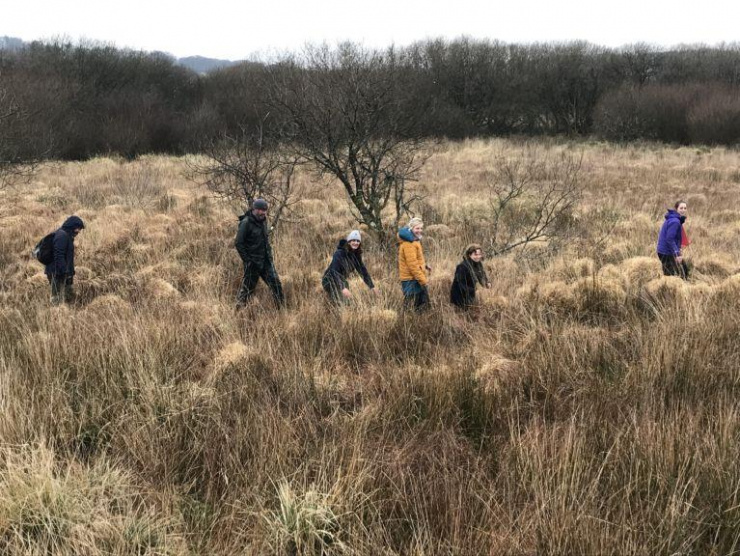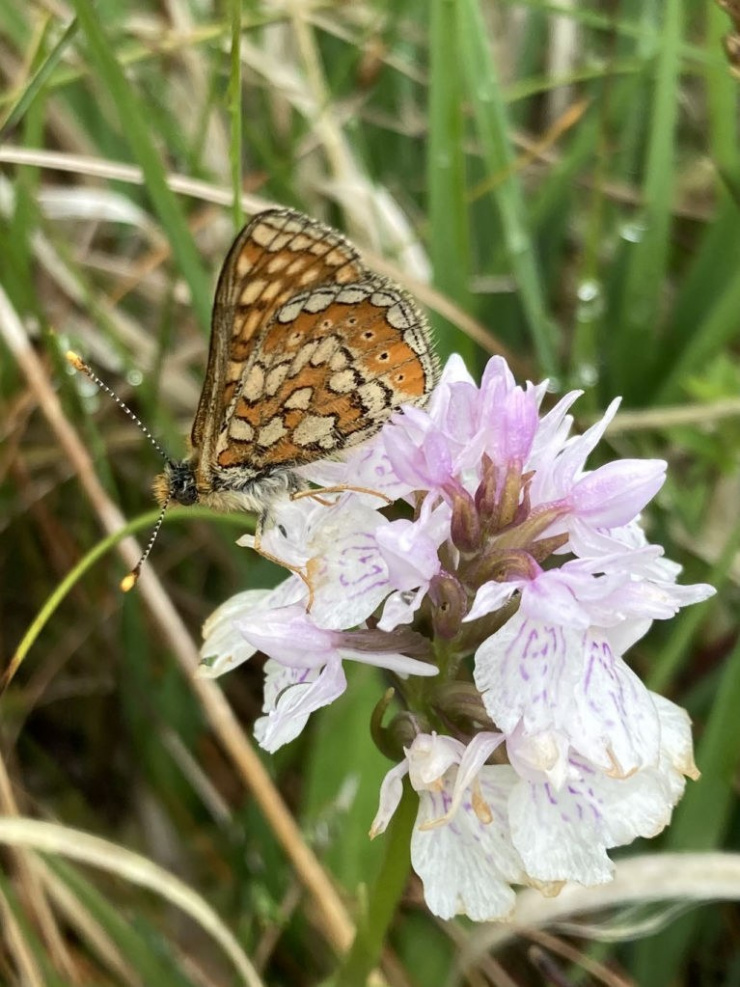Green Recovery of the Marsh Fritillary Project
This year we have been doing a series of volunteer days for a local project helping the rare Marsh Fritillary butterfly.
In January we did some scrub clearance to create space between sections of Rhôs pasture so the butterflies can move across a larger area without being stopped by large bushes of gorse. In March we went searching for Marsh Fritillary caterpillars and their larval webs. Unfortunately it was a very grey damp day and the caterpillars were snuggled down beneath the vegetation and we didn’t see any. In June we surveyed some sites on two local farms for the Marsh Fritillary butterflies. We timed it well and the sunny day meant we saw many of them on the wing.

The project is called 'Green Recovery of the Marsh Fritillary' and is being entirely funded by the National Lottery Heritage Fund. It's a partnership between the East Shallowford Trust, Dartmoor Hill Farm Project and Butterfly Conservation, and is employing one member of staff.
The project is about widening out the audience for East Shallowford Trust, getting more people involved in restoring species rich grassland on Dartmoor and looking after priority species (focussing on Marsh Fritillary), and providing education through ‘hands on’ engagement (especially for harder to reach groups).
The project is working with 11 connected farms on east Dartmoor which have Rhôs pasture, the habitat of the Marsh Fritillary. The project offers advice to the landowners on managing Rhôs pasture systems, monitoring of the butterfly and habitat, and habitat restoration by increasing food plant abundance through seed collection, propagation and planting at Shallowford Farm and other sites in the network. The Marsh Fritillary can be found in Dartmoor’s wet valleys and mires, nectaring on orchids, bog bean and other wetland plants, and gliding gracefully among Devil’s-bit scabious plants in search of egg-laying spots.

The Marsh Fritillary is threatened, not only in the UK but across Europe, and is, therefore, the object of much conservation effort. It was once widespread in Britain but has declined severely over the twentieth century. Populations are highly volatile and the species requires extensive habitats or habitat networks for its long term survival. It is now confined to the western side of Britain. We are really pleased to contribute to this project and we look forward to seeing the outcomes of the work carried out.
Information provided by Butterfly Conservation




